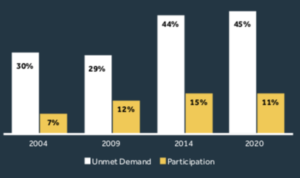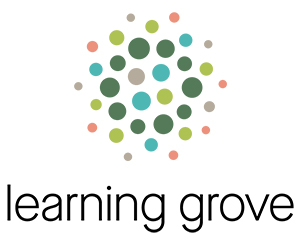A robust child care system that provides a continuum of high-quality care and learning opportunities from birth through school age is essential for meeting the needs of kids and families today. Yet, in Kentucky, the number of families without access is on the rise, according to a new fact sheet from the Kentucky Out-of-School Alliance (KYOSA).
The need for affordable, high-quality child care does not end on a child’s first day of kindergarten. When people think of child care, they often think of very young children (i.e., babies, toddlers, and preschoolers) — not a 3rd grader who rides the bus to school each day. But, in today’s world, where 69% of elementary-school-age children (ages 6-12) in the U.S. have all available parents in the labor force, school-age child care is an absolute necessity.

School-age youth spend 80% of their waking hours outside of school, with 1 in 5 kids alone and unsupervised when the school day ends. During out-of-school time, which covers before and after school as well as school vacation weeks and summers, working parents depend on school-age child care to provide a safe and enriching environment. In Kentucky, 80% of parents with a child enrolled in an afterschool program report that the program helps them keep their job or work more hours.
“We have decades of research demonstrating the effectiveness and impact of high-quality afterschool programs,” explained Tom Haggard, Executive Director of KYOSA. “Students who regularly participate in high-quality programs improve their ABCs—school attendance, school behavior and coursework.”
But the number of families in Kentucky without access to school-age child care is on the rise. Over the past 20 years, demand for afterschool and summer programs has skyrocketed while access has shrunk. Between 2014 and 2020, as high levels of parents reported barriers to enrollment related to cost, program supply, and transportation access, Kentucky saw a decrease in afterschool program participation for the first time ever since 2004.
Currently, for every child in Kentucky in an afterschool program, 4 more are waiting to get in. This means that there are now more than 280,000 children in Kentucky who would be enrolled in an afterschool program if one were available to them. When it comes to summer, only 16% of school-age youth in Kentucky participated in a structured summer experience in 2019, which includes summer learning programs, sports programs, summer camps, summer school, summer jobs, or internships.

Number of families in Kentucky without access to school-age child care is on the rise — KYOSHA chart
According to Kentucky parents, the top three reasons for not enrolling their child(ren) in an afterschool or summer program—the types of programs parents turn to for school-age child care—are cost, lack of programs, and lack of transportation to and from programs.
Public funding for school-age child care is at historic levels, but most Kentucky providers and families can’t access it. Since 2020, states have received unprecedented amounts of federal COVID-relief funding targeted towards expanding access to afterschool, summer learning, and child care, which includes school-age care. Yet less than 1 in 5 afterschool and summer program providers (17%) have received any COVID-relief funding.
There are two major sources of long-term funding and supports for school-age child care in Kentucky. The Child Care and Development Fund (CCDF) is a federal program that supports low-income working families by subsidizing the cost of child care and providing additional funding to help states improve quality and address critical supply shortages.
The Employee Child Care Assistance Partnership (ECCAP) Program is a state pilot program, based on HB 499, that seeks to incentivize employers to contribute to their employees’ child care costs by providing state matching funds directly to an eligible child care provider based on employer’s contribution and employee’s household income.
Both programs are designed to serve families with children up to age 13, or through age 18 if the child is mentally or physically incapable of self-care or is under court supervision. But too many eligible families in need of affordable school-age care can’t find a program that accepts subsidy payments. Under Kentucky’s current system, afterschool and summer programs can only accept CCDF subsidy payments or ECCAP state matching funds if they operate as a licensed child care center and have a quality rating under Kentucky’s early care and education rating system, Kentucky All STARS.
As of May 2023, Kentucky had less than 200 licensed stand-alone school-age child care centers with a Kentucky All STARS rating. In addition to these stand-alone school-age child care centers, there are approximately 1,000 early care and education providers that are licensed to serve the school-age population. But due to state data limitations, it is unknown how many ECE providers currently serve school-age youth and in what capacity.
“Lack of high quality, affordable and accessible afterschool care impacts everyone – from students not getting the additional support they need to be successful to parents who lose peace of mind about the safety of their children after school,” said Haggard. “These issues are exasperated in low-income and rural communities.”
Without a robust school-age child care system, many Kentucky parents, especially mothers, will remain underemployed or out of the workforce all together while businesses will continue to experience lost productivity as a result. Much work is needed to turn things around.
This starts with ensuring that Kentucky’s child care regulations support the needs of school-age children and providers, and that eligible families do not face additional barriers when trying to utilize CCAP or ECCAP to pay for school- age care. To learn more about school-age child care in Kentucky, KYOSA’s current policy priorities, and what can be done to expand access, visit www.kyoutofschoolalliance.org.
Kentucky Out of School Alliance



















